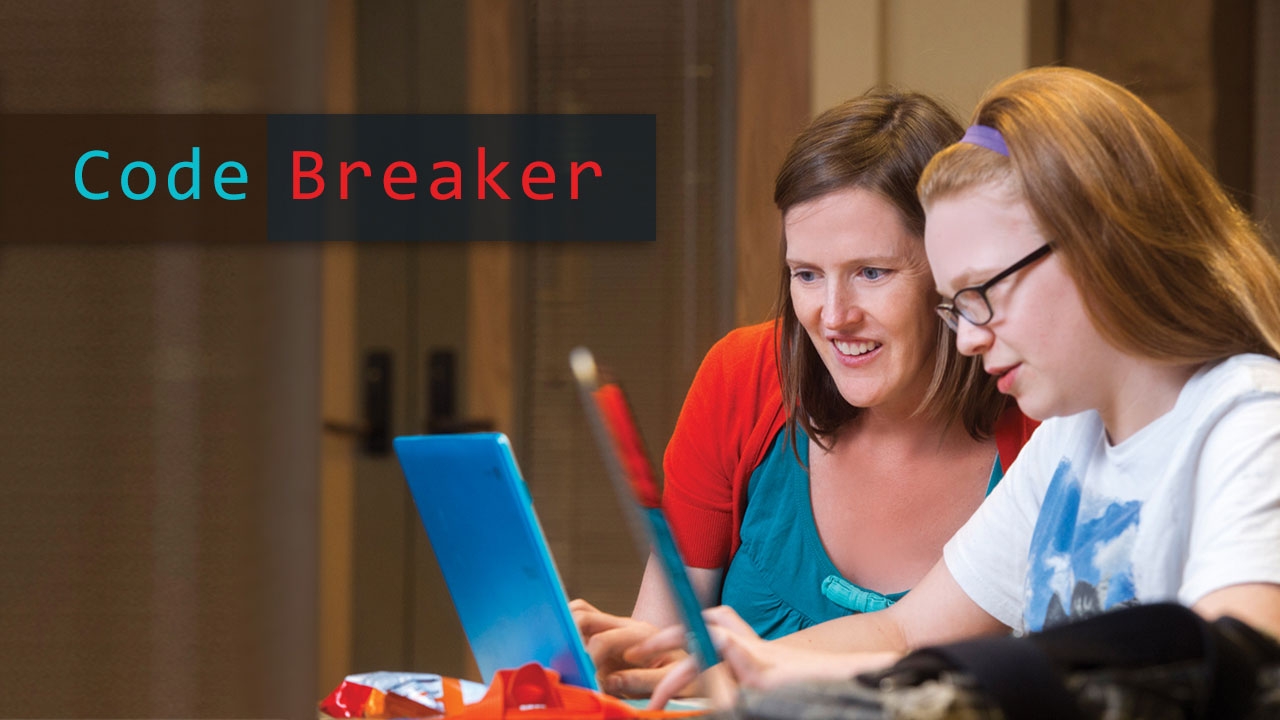Hannon (above) works with a student at a Girls Who Code meeting.
Computer science is one of the country’s hottest careers—but women are staying away from the field. In fact, women make up only 25 percent of the computing workforce, and they earn just 18 percent of undergraduate computer and information sciences degrees, according to the National Center for Women & Information Technology.
Lindsay Hannon is determined to rewrite that script through Girls Who Code, an organization taking a creative approach to spark excitement about computer science among young women in grades 6-12. Hannon, who earned a computer science master’s degree from UAB in 2014, was recruited to help launch the group’s first Alabama chapter by UAB associate professor of computer science John Johnstone, Ph.D. (He, in turn, was recruited by Homewood high schooler Katy Snoddy, whose interest in programming led her to start the club.)
Hannon had a math degree and was working at the United Way when she got the coding bug herself. “I put together database and reporting applications,” she recalls. “I enjoyed doing that, but I also realized how much more I wanted to learn, so I went back to school.” After graduating from UAB, Hannon got a job with Alabama Power. Now she works at Urban Coding, “a local development shop specializing in building modern web applications,” she says.
High-Tech Creativity
Hannon and her husband previously ran a tutoring “boot camp” for Birmingham high school students pursuing AP Calculus, so she was eager to teach with Girls Who Code. “I especially enjoy working with girls who are brand new and don’t know what they don’t know,” Hannon says. “I like the idea of a place for younger girls to get together” and learn all that computer science has to offer.
Every other week, club members meet to tackle programming challenges and show off their clever solutions, such as a program that can draw the Japanese alphabet in a flowing script. The approach emphasizes hands-on work, collaboration, confidence, problem solving, and opportunities to take risks and make mistakes—which is the opposite of many computer classes. Hannon says that coding “can be a form of creative expression as well as a technical skill. Part of my role is to get to know the girls—to weave some of their interests into the lessons. I get excited when they take on a task and add their own touches.”
Those moments make volunteering a pleasure, Hannon adds. “It’s inspiring to be around girls who have dreams about what they want to accomplish with what they learn: building medical monitoring applications, designing video games, animation,” she says. “They are starting young to build the skills they need to accomplish those goals. And they enjoy it, which is an invigorating environment.”


